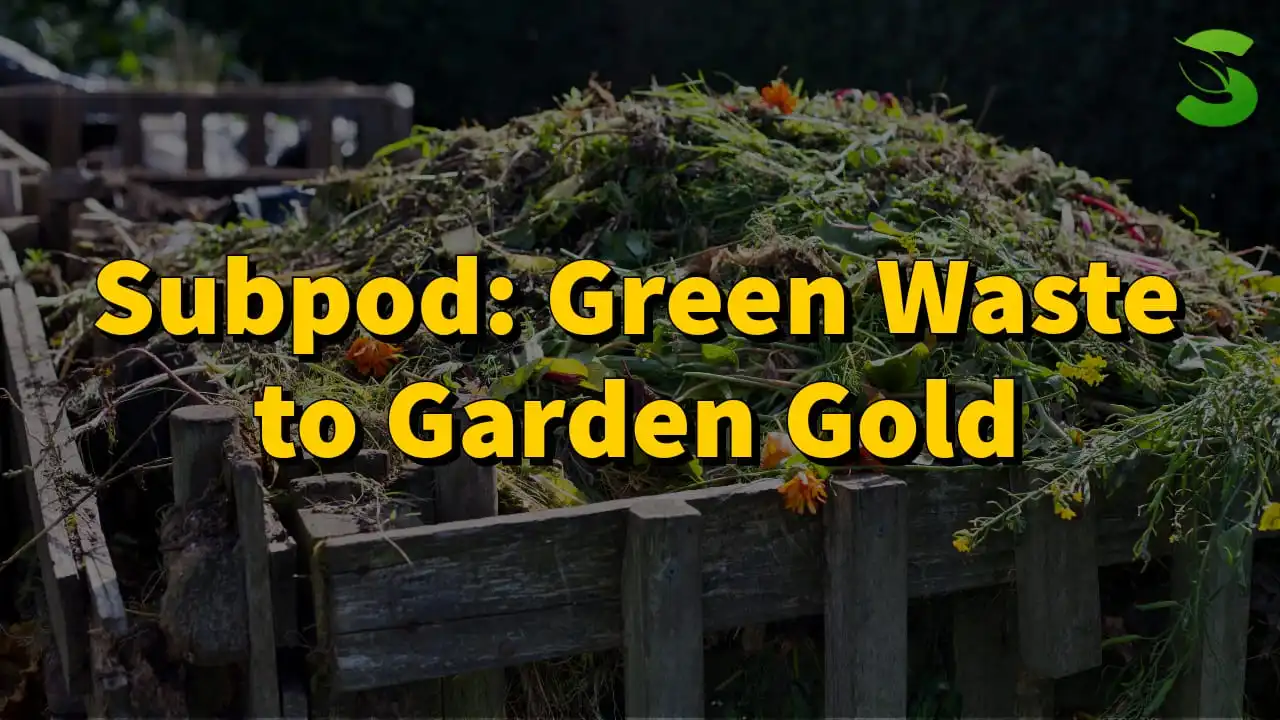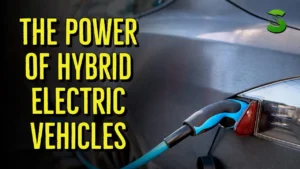In the quest for sustainable living, turning green waste into a valuable resource has become a priority for eco-conscious individuals. As gardeners, we often find ourselves grappling with the dilemma of disposing of green waste responsibly. This article explores an innovative solution to this predicament: Subpod, a revolutionary system that transforms green waste into garden gold.
The Problem with Green Waste
Green waste, including kitchen scraps and garden clippings, poses a significant environmental challenge when sent to landfills. The decomposition of organic matter in landfills produces harmful greenhouse gases, contributing to climate change. In addition, the nutrients in green waste are lost, further depleting the soil’s fertility.
Subpod: A Revolutionary Solution
Enter Subpod, a game-changer in the world of composting. Subpod is a below-ground composting system designed to effortlessly turn your green waste into nutrient-rich compost. This innovative solution not only addresses the environmental issues associated with green waste but also provides a sustainable source of organic matter for your garden.
How Subpod Works
At its core, Subpod functions as an in-ground composting unit. The system is designed to be placed directly in your garden bed, integrating seamlessly into your outdoor space. The composting process occurs below ground, minimizing odors and pests. Subpod’s unique design allows worms to thrive, enhancing the composting process and creating a healthier soil environment.
Setting Up Your Subpod
Getting started with Subpod is a breeze. Follow these simple steps to set up your Subpod and kickstart your journey to sustainable gardening:
- Choose a suitable location in your garden bed.
- Bury the Subpod partially, leaving the lid exposed.
- Add your green waste regularly.
- Let nature and the composting worms inside do their magic.
Benefits of Using Subpod
The advantages of incorporating Subpod into your gardening routine are manifold:
- Environmental Impact: By diverting green waste from landfills, you contribute to reducing greenhouse gas emissions.
- Nutrient-Rich Compost: The compost produced by Subpod is a nutrient-packed elixir for your plants, promoting healthy growth.
- Reduced Landfill Contribution: Cut down on your contribution to overflowing landfills by composting at home with Subpod.
Successful Composting with Subpod
Achieving optimal results with your Subpod requires a bit of know-how. Here are some tips to ensure successful composting:
- Balanced Input: Mix kitchen scraps with garden clippings to maintain a balanced carbon-to-nitrogen ratio.
- Adequate Moisture: Keep the compost moist but not waterlogged.
- Regular Turning: Turn the compost regularly to aerate it and speed up the decomposition process.
Subpod in Action: User Experiences
To truly grasp the impact of Subpod, let’s delve into the experiences of individuals and communities that have embraced this innovative composting system.
Comparing Subpod to Traditional Composting
While traditional composting methods have their merits, Subpod offers distinct advantages:
- Odor Control: Subpod’s below-ground design minimizes odors, making it more neighbor-friendly.
- Pest Reduction: The in-ground system deters pests that may be attracted to traditional compost bins.
- Space Efficiency: Subpod seamlessly integrates into your garden bed, saving space compared to traditional composting setups.
Addressing Common Concerns
Prospective Subpod users may have questions or concerns. Let’s address some common queries:
- Is it difficult to set up Subpod? Not at all! Setting up Subpod is a straightforward process, and it comes with clear instructions.
- Does Subpod attract pests? The below-ground design of Subpod minimizes the risk of pests compared to traditional compost bins.
- What can and cannot be composted in Subpod? Subpod can compost a wide range of kitchen scraps and garden waste, excluding meat and dairy products.
DIY Composting vs. Subpod
While some may prefer the hands-on approach of traditional composting, Subpod offers a hassle-free alternative. Consider your lifestyle and gardening goals when choosing the right composting method for you.
The Future of Sustainable Gardening
Innovations like Subpod pave the way for a greener future. As more individuals adopt sustainable practices, the collective impact on the environment grows exponentially. Subpod is not just a product; it’s a step toward a more sustainable and regenerative approach to gardening.
Is Subpod Right for You?
To determine if Subpod is the right fit for your gardening needs, consider the following:
- Space: Do you have a suitable garden bed to accommodate Subpod?
- Commitment: Are you committed to regular composting maintenance?
- Goals: What are your sustainability goals for your garden?
Testimonials from Happy Gardeners
Here’s what some Subpod users have to say about their experience:
- Jane from California: “Subpod has made composting so easy. My garden has never looked better!”
- Mark from Australia: “I love knowing that I’m reducing my environmental impact with Subpod. Plus, the compost is amazing for my plants!”
Conclusion
In the journey to turning green waste into garden gold, Subpod emerges as a beacon of sustainability. Its simple yet effective design, coupled with the environmental benefits it offers, makes it a must-have for conscientious gardeners. By incorporating Subpod into your gardening routine, you not only contribute to a healthier environment but also enjoy the bountiful rewards of nutrient-rich compost.
FAQs
- Can I use Subpod in a small backyard?
- Yes, Subpod is designed to fit seamlessly into small garden beds, making it suitable for compact spaces.
- How often should I add green waste to Subpod?
- Aim to add kitchen scraps and garden clippings to your Subpod every few days for optimal composting.
- Is Subpod easy to clean?
- Subpod’s design minimizes the need for regular cleaning, but occasional maintenance ensures optimal performance.
- Can I use Subpod in cold climates?
- Yes, Subpod is designed to function in a variety of climates, including colder regions.
- What sets Subpod apart from other composting methods?
- Subpod’s below-ground design, od
ALSO READ | Sustainable Farming: Nurturing the Earth







